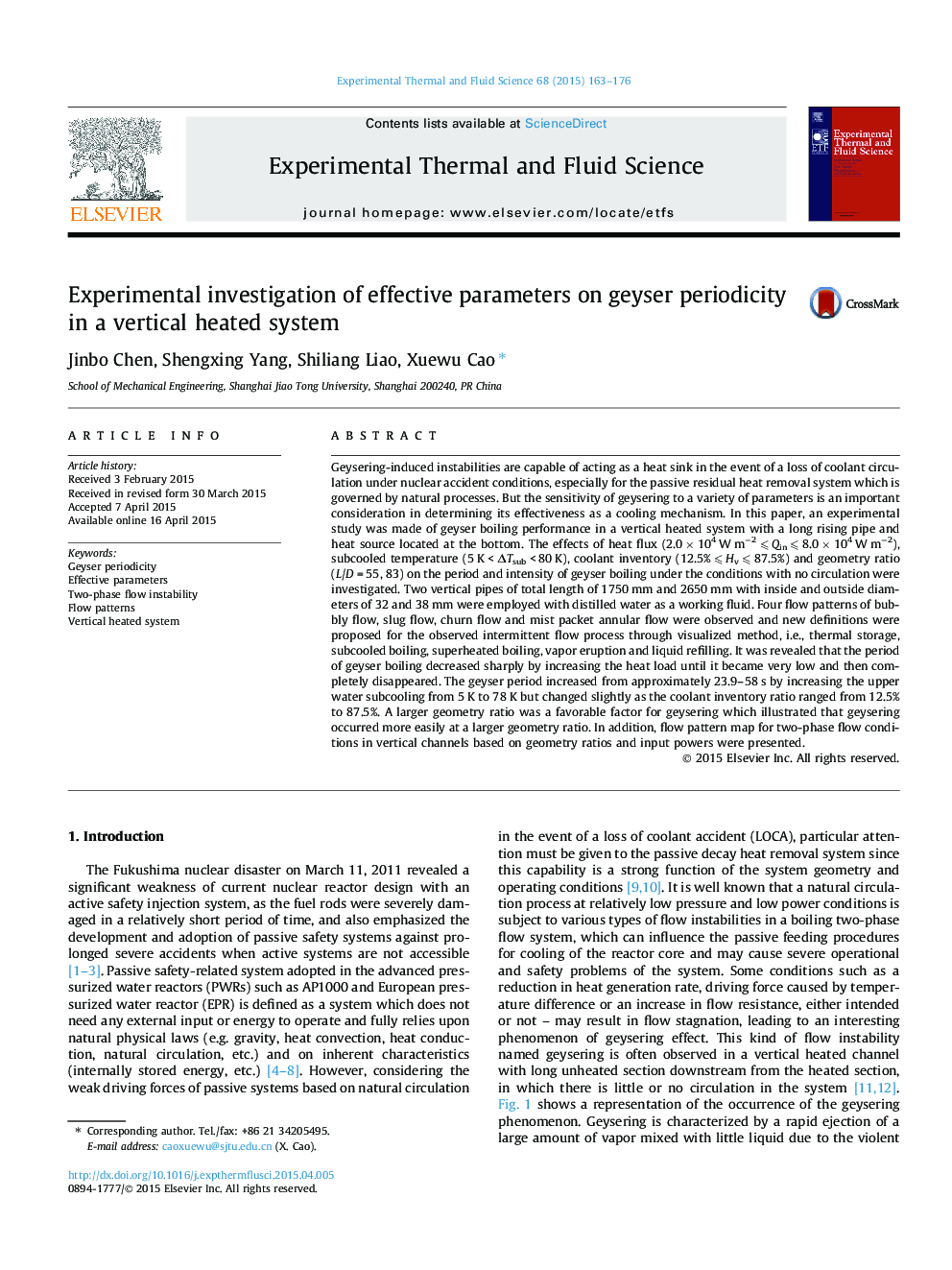| Article ID | Journal | Published Year | Pages | File Type |
|---|---|---|---|---|
| 7052156 | Experimental Thermal and Fluid Science | 2015 | 14 Pages |
Abstract
Geysering-induced instabilities are capable of acting as a heat sink in the event of a loss of coolant circulation under nuclear accident conditions, especially for the passive residual heat removal system which is governed by natural processes. But the sensitivity of geysering to a variety of parameters is an important consideration in determining its effectiveness as a cooling mechanism. In this paper, an experimental study was made of geyser boiling performance in a vertical heated system with a long rising pipe and heat source located at the bottom. The effects of heat flux (2.0 Ã 104 W mâ2 ⩽ Qin ⩽ 8.0 Ã 104 W mâ2), subcooled temperature (5 K < ÎTsub < 80 K), coolant inventory (12.5% ⩽ Hv ⩽ 87.5%) and geometry ratio (L/D = 55, 83) on the period and intensity of geyser boiling under the conditions with no circulation were investigated. Two vertical pipes of total length of 1750 mm and 2650 mm with inside and outside diameters of 32 and 38 mm were employed with distilled water as a working fluid. Four flow patterns of bubbly flow, slug flow, churn flow and mist packet annular flow were observed and new definitions were proposed for the observed intermittent flow process through visualized method, i.e., thermal storage, subcooled boiling, superheated boiling, vapor eruption and liquid refilling. It was revealed that the period of geyser boiling decreased sharply by increasing the heat load until it became very low and then completely disappeared. The geyser period increased from approximately 23.9-58 s by increasing the upper water subcooling from 5 K to 78 K but changed slightly as the coolant inventory ratio ranged from 12.5% to 87.5%. A larger geometry ratio was a favorable factor for geysering which illustrated that geysering occurred more easily at a larger geometry ratio. In addition, flow pattern map for two-phase flow conditions in vertical channels based on geometry ratios and input powers were presented.
Related Topics
Physical Sciences and Engineering
Chemical Engineering
Fluid Flow and Transfer Processes
Authors
Jinbo Chen, Shengxing Yang, Shiliang Liao, Xuewu Cao,
